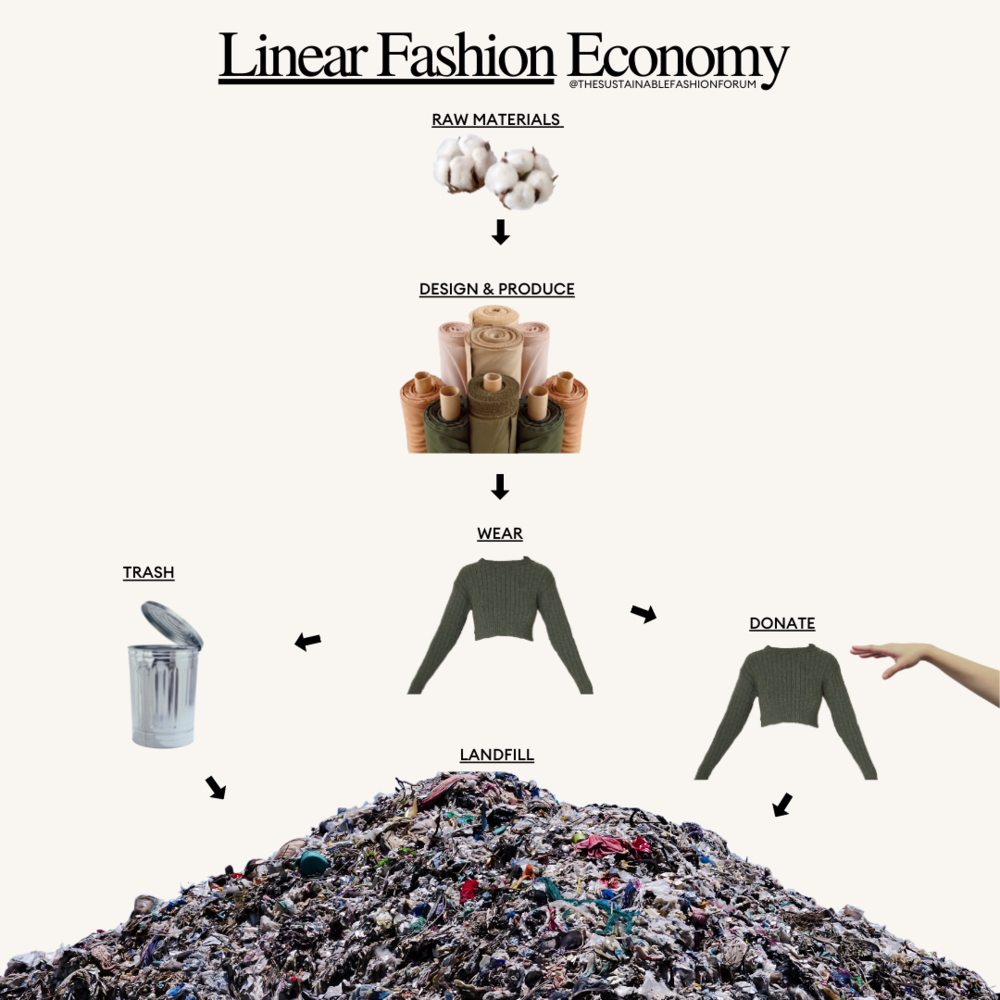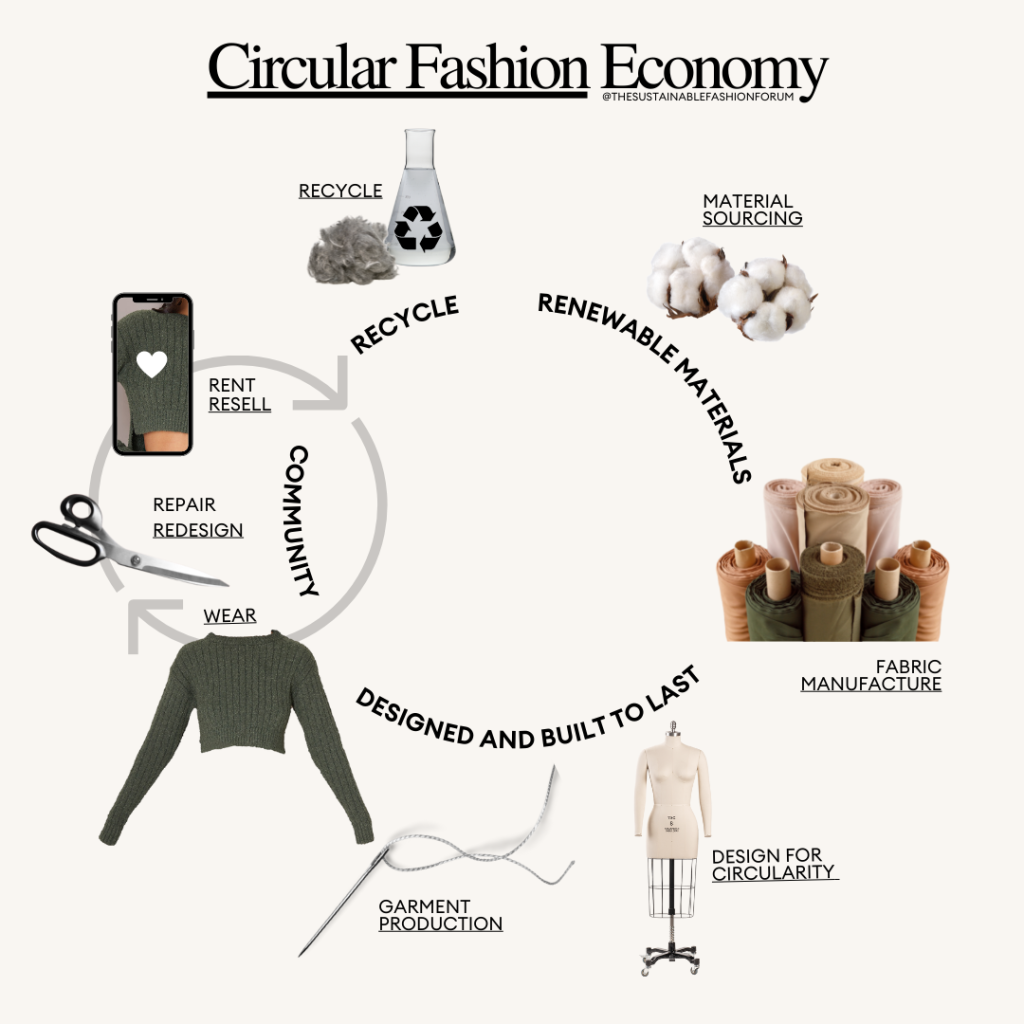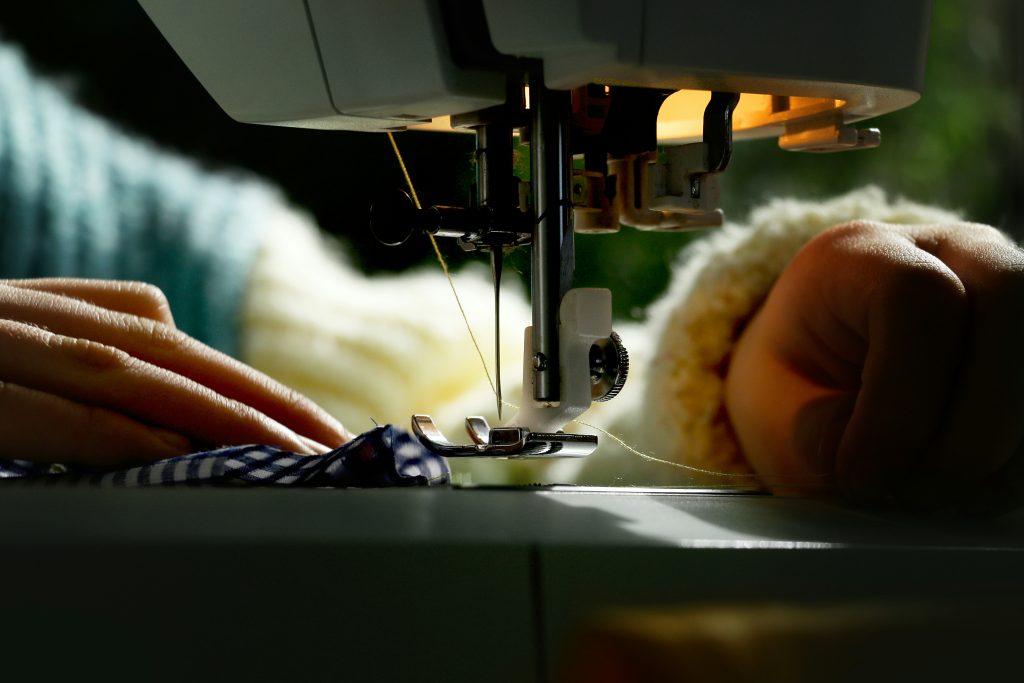The Future of Fashion is Circular and Rooted in Natural Raw Materials
Guest posts |
There’s a term that has been buzzing louder and louder in the industry and throughout social media: Circular Fashion. By now, it’s become clear that the fashion industry is one of the largest contributors to climate change and the environment, and the shift toward a circular fashion economy is becoming increasingly urgent.
In this article, we will discuss how the circular fashion economy works, how it reduces waste and supports local communities, and why it is a crucial step toward creating a more sustainable and responsible fashion industry.
What is Circular Fashion?
Circular fashion involves the life cycle of a product continuing on and on and on, with sustainability and longevity at top-of-mind. Don’t worry, we’ll elaborate! But first, imagine the more traditional journey of a product – the Linear Fashion Economy (see image below).
From seed planted (or factory if you’re still wearing synthetics), throughout the supply chain, to the consumer. Then when the wearer is no longer loving it, unfortunately, the item typically goes to the landfill. In fact, 85% of textiles end up in the landfill each year, equivalent to about one dump truck per second (World Economic Forum).

We’re seeing in real-time the detriment the linear fashion economy can have on society. The idea is, ‘ok I can buy this top and just donate the one I don’t like anymore’, and while the intention may be good, the execution isn’t always so lovely. A huge amount of clothes that are donated actually never make it to another wearer– nearly 30% of donations each year are unable to be used or resold based on their condition (Re/Make).
In Los Angeles, we’re currently seeing this firsthand. The Eaton and Palisades fires have burned over 40,000 acres at the time of this being written, killing 27 people and leaving tens of thousands displaced without access to their homes (USA Today). The local and national community has stepped up by donating clothes and other items, which is wonderful. To see mutual aid and communities coming together is very powerful; however, because a large amount of the donations are actually dirty or torn, essentially, they’re donating trash, creating a bigger job for mostly volunteers to help sort through the items to be able to give to the community desperately in need.
View this post on Instagram
Intentional Donations
Let’s be clear: donating and mutual aid is incredibly important, but being more intentional about how we support our communities and the earth at large is essential. The rule of thumb for donating is to only donate something you would be grateful to receive– if you wouldn’t buy a shirt with stains while thrifting, donation is not the next step for that shirt.
That being said, there are companies that accept donations, like Goodwill, that help to recycle any stained or torn textiles. We suggest contacting your local donation center to ask how they handle unwearable textiles. (We’ll dive into how to dispose of an item you can’t donate further down in this article!)
Circular Fashion
Now, let’s imagine extending a garment’s life in our closet by simply *not* offloading it to a donation site or, worse, to the garbage. And instead, having a system in place that aims to either upcycle, down-cycle, or recycle the garment for continuous purposes. Circular fashion is at the hands of everyone involved when it comes to a garment. Let’s get into it.

First step? Fabric (!!!), Design, and Development
Let’s start with the very first stage, the material of the garment in the circular fashion economy. In this case, sustainable natural fibers, like cotton, are ideal. In an article by World Economy Forum, the key principles for circularity and its inherent call for “fundamental change” are that “products should be designed with easy reuse or recycling in mind, reused materials should be used instead of net new resources where possible, and products should last longer.” When designing a product with the intention of longevity and durability, cotton meets this requirement as it’s amazingly durable and versatile. Additionally, with the ultimate goal of sustainability, if you’ve read a few of our other articles, you know that cotton is inherently biodegradable in the right conditions, only taking between 1-5 months to degrade, while synthetic alternatives can take centuries or more!!!
Repair, Reinvent, Rewear
Upcycle? Yup, we’ve mentioned it in previous articles, but basically, it’s taking an existing garment, and when it’s no longer wanted as, say, long jeans, you can cut them to be shorts, and voila, you’ve created a new garment without using any additional resources! Be sure to check out our articles about this, including TikTok’s creative influence and this one for styling ideas and inspiration! That was clearly a quick and easy example; however, we’re seeing consumers’ creativity really shine in this department.
Brands are also taking their part in this role. Denim company Nudie collects unwanted items from consumers and even has a lifetime repair program, repairing over 60 thousand jeans in 2019 and collecting just under 12 thousand unwanted jeans (WEF). As noted in the World Economic Forum, this “led to 50,000kg of clothing being diverted from landfill, and 443,000,000 litres of water being saved that would otherwise have been used in the production of new clothing.” Additional brands such as Patagonia and Levi’s also have repair programs, while Girlfriend Collective, Everlane, and Reformation encourage the return of their products to be recycled into future garments (Sourcing Journal, Recycle Coach).

Resell, Rent, Recycle, Downcycle
Whether you purchase (or rent!) a garment brand new, vintage, second-hand, or previously upcycled, there will come a time when it has served its purpose in your closet and in need of disposal. Reselling your garments with platforms like Poshmark, Depop, or ThreadUP is one way. Responsible disposal is so important, and brands like those mentioned above, as well as companies like Trashie and its take-back bag system can be very helpful for this step.
Some companies choose to only accept garments they originally produced. This is due to the complications that can arise without knowing the full content of the garment and make it more challenging to recycle the fabric for a new garment. Often, companies that have a recycled fabric model will mix recycled with new, as per the video below. When choosing a suitable fabric for “easy reuse or recycling in mind,” natural fibers are top of mind (WEF). Cotton is a great option as it helps to strengthen the garment’s durability.
In contrast, other companies, like H&M, Gap, ThreadUP, and Trashie, will take whatever is sent to them and downcycle what is unknown [content] to them. Downcycling is an impactful way to utilize unwanted clothing that’s stained or otherwise compromised. This usually involves donated items, breaking them down into shreds of fabric, and utilizing that fabric for something new, like home insulation.
@tomsodyssey No, not the landfill ♻️👕 I got to explore a recycling factory and learn more about sustainable fashion. @A.S.Adventure sent me out to learn about the circular model BlueLOOP Originals put in place that’s taking on the traditional fashion industry. #circulareconomy #circularfashion #sustainability #sustainablefashion #reusereducerecycle #recycledfashion #ecofriendly #secondhandfashion #fashiontips ♬ origineel geluid – Tom’s Odyssey
Circularity For a Better Future
It is important that the industry at large works in collaboration with its consumers and continues to evolve and consider their environmental impact. The fires in LA are a symbolic and literal push to really look into our consumption habits and make serious shifts. As mentioned in a previous article, “as the climate shifts, so does consumer behavior and expectations”.
Founder of the denim brand Diesel, Renzo Rosso, whose Spring ‘25 show was largely rooted in circularity and sustainability, describes the future well, noting, “Sustainability is not just about recycled fabric; it is also about thinking and acting responsibly towards the environment and towards people…I believe in a circular business model where a company creates, produces, sells, collects and returns a portion of the value to the community: this, in my view, is sustainability.” (Sourcing Journal)
When considering the fate of sustainable fashion, a circular economy model is an important consideration. When the goal of circular fashion is to reduce the environmental impact, it’s very impactful for the garment at the beginning of the cycle (and throughout) to be a sustainable material, like cotton.
@fabscrapevents Circular fashion: keeping clothes out of landfills #sustainablefashion #nyc @Danielle Urban ♬ original sound – FABSCRAP Events
Sources
https://www.weforum.org/agenda/2021/05/sustainable-fashion-jeans-circular-denim/
https://www.thesustainablefashionforum.com/pages/what-is-circular-fashion
https://remake.world/stories/is-donating-my-clothes-really-ethical/
https://issuu.com/sourcingjournalevents/docs/rivet_26_final_hires?fr=sOTU1Yjc5NzAzMDQ
https://www.wastetodaymagazine.com/news/goodwill-recycles-textiles-as-part-of-pilot-project/
